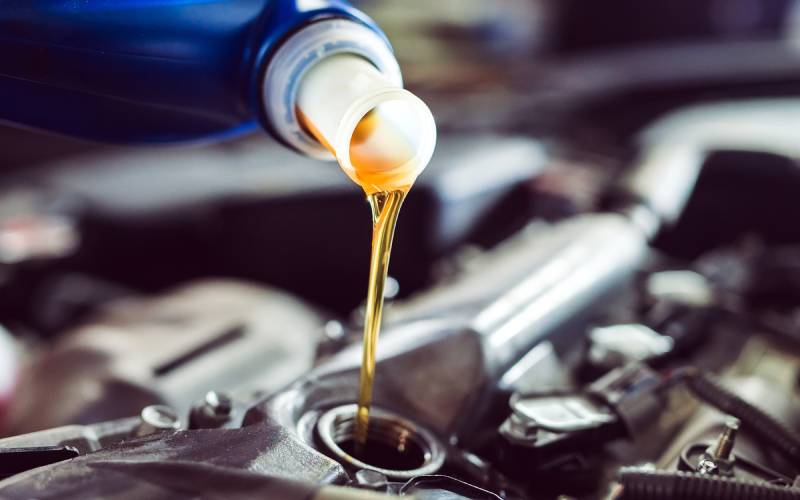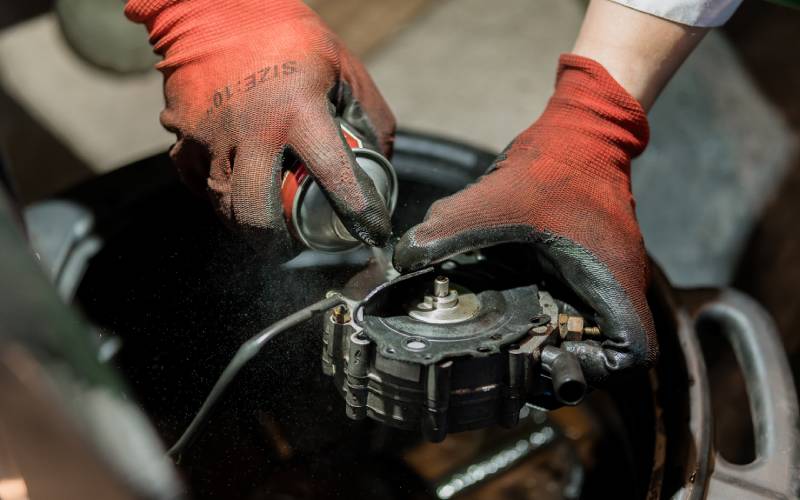A Complete Guide to Oil and Lubes for Building Engines

Building an engine requires a careful blend of precision, craftsmanship, and engineering know-how. For any auto enthusiast, it’s not just about putting together parts; it’s about creating a high-performing machine. The right oil and lubricants can keep your parts moving smoothly for a long time.
When you’re looking to reduce friction, dissipate heat, and maintain the functionality of your engine’s moving parts, Driven Racing Oil is here to help. Here’s our complete guide to oil and lubes for building engines. Add years and miles onto your racing engine with the right care.
The Role of Oil in Your Engine
Oil is necessary in any engine, racing or otherwise. It performs several key functions that keep everything in working order, making it a nonnegotiable component in the building process. The first and most obvious thing is that it lubricates the moving metal parts in your engine. Without oil, there’s more friction, which leads to excessive heat. Over time, heat can cause wear and tear on components, leading to reduced efficiency and possible engine failure.
Engine oil helps regulate the temperature by absorbing and transferring heat away from critical components. It helps prevent any one part of your engine from overheating too much, which is essential for high-performance activities. Additionally, oil minimizes corrosion by creating a thin protective film on engine parts and by containing additives that neutralize acidic byproducts of combustion.
Types of Base Oils Explained
When it comes to building engines, oils typically fall under three categories based on their base oil type—mineral, synthetic, and semi-synthetic. Each has properties that influence performance and suitability.
Mineral oils are derived from crude oil, and it’s the most common and readily available type. We often use mineral oil in older engines for short-term applications. While relatively inexpensive, its performance can be less efficient in extreme temperatures than its synthetic counterparts.
Synthetic oil, on the other hand, works better for top-tier performance. This type offers better thermal stability, greater resistance to oxidation, and improved flow characteristics in both hot and cold environments.
Semi-synthetic oil combines the affordability of mineral oil with some of the benefits of synthetic oil. It is a middle-ground option that offers decent protection and flow while staying relatively budget-friendly.

Why Viscosity Matters
Viscosity is an important thing to keep in mind when selecting oil for engine-building projects. It directly influences how the oil behaves under different temperatures and operating conditions. To simplify the concept, viscosity refers to the oil’s thickness and its ability to flow.
When your engine is cold, such as during startup, oil must flow quickly to coat engine components. Low-viscosity oils excel here because they flow more easily. Conversely, in high-temperature conditions where the engine is running at peak performance, oil must maintain its thickness to ensure proper lubrication. High-viscosity oils are more effective in that scenario.
Oil viscosity is represented by a set of numbers, for example, “10W-30.” The first number and the “W” indicate how the oil flows in cold temperatures, while the second number reflects how well it performs under heat. Understanding your engine’s requirements for oil viscosity ensures that your engines have the protection they need, regardless of environmental conditions.
Additives and Their Importance
Every quality engine oil contains more than just the base oil. Additives enhance oil performance and are tailored for specific purposes. Some additives work to reduce wear and friction, providing an extra layer of protection to moving parts under heavy loads.
Certain oils contain detergent additives, which clean up deposits and residues, particularly in engines that may have accumulated contaminants over the years. Additionally, some add antioxidants to slow down oil breakdown caused by exposure to oxygen, extending the oil’s lifespan.
Breaking in a New Engine
When it comes to breaking in a newly assembled engine, your choice of oil can make or break the process. During the initial break-in period, specific oils are used to seat the piston rings and valves properly. These break-in oils usually have a different additive package optimized for the process, helping reduce wear and enabling components to adjust to their proper tolerances.
After the break-in period, which typically lasts around 500 to 1,000 miles, switching to a high-performance oil that works for your engine’s needs is wise. During this phase, monitor oil levels and quality to ensure no contaminants have entered the system during assembly.

Choosing the Right Lubricants for Components
Lubrication is not exclusive to the oil sump. You can use different lubricants for all sorts of engine parts during assembly, like your camshafts, piston rings, and bearings.
Assembly lubes, often grease-like in consistency, protect moving parts during the initial startup. Manufacturers design these lubes to stay in place and ensure proper lubrication until the oil system takes over once the engine is running. Some components, like camshafts, require lubes that can withstand high pressures to prevent damage.
Maintaining Consistency With Oil Changes
Even in a freshly built engine, oil doesn’t last forever. You need to change the oil regularly to maintain optimal performance. Over time, oil degrades and loses its ability to lubricate effectively. Contaminants from combustion and inevitable wear particles reduce oil’s ability to protect components.
You must include routine maintenance as part of your long-term engine care strategy. Keep track of driving conditions to determine when you need an oil change. Keep in mind that engines operating under severe conditions—such as high temperatures or heavy loads—may require oil changes more frequently than those used in standard conditions.
Testing and Trialing Oils
Not all oils will behave the same way in practice, which is why testing and trialing oils can provide valuable insights. If you’re building a high-performance engine, testing different types of oils can help determine which works best for your setup. Observe how the oil performs in terms of temperature regulation, wear protection, and flow efficiency.
If you’re looking to optimize your engine’s performance and longevity, consider exploring the range of high-quality oils and lubricants offered by Driven Racing Oil. From engine break-in oil to essential maintenance products, Driven Racing Oil provides the reliability and performance you need for your engine building projects.
Use this guide to oil and lubricants for building your next engine. Enhance your engine’s efficiency and protection by choosing the best oils and lubes, designed to exceed your expectations. Explore the Driven Racing Oil lineup today, and experience the difference it can make in your engine’s performance.

You must login to post comments.